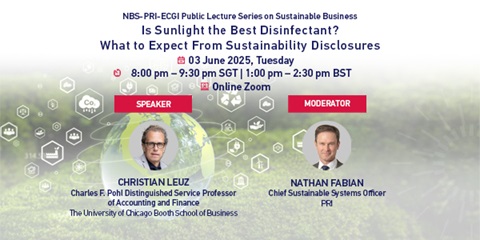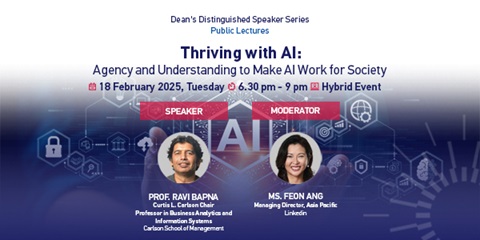From returning tourists to rising inflation, 5 highs and lows that drove Singapore economy in 2022
The past 12 months have been eventful for the Singapore economy, what with disruptions caused by Russia's invasion of Ukraine that began in February and the US Federal Reserve in March starting the first of seven interest rate hikes this year.
The developments upended global markets ranging from commodities to cryptocurrencies, and Singapore, a financial hub which relies on imports from rice to natural gas, saw a significant impact. Even as businesses prepared to reopen in full after pandemic restrictions were lifted in April, the Republic saw prices jump and remain elevated throughout 2022.
Recession fears in Europe and the US and pandemic lockdowns in China dampened exports and tourism, prompting the Ministry of Trade and Industry (MTI) to narrow its gross domestic product growth projections for the year to around 3.5 per cent. In comparison, Singapore's GDP expanded by 7.6 per cent in 2021.
As people celebrate the first Christmas in three years without caps on the size of gatherings, Insight looks at five key business highlights of the year and how there may be a silver lining to some of these challenges:
- Rising inflation and interest rates
The year saw prices of food, petrol and electricity jump in Singapore as a result of sanctions against Russia and disruptions to production in Ukraine. Russia is a major exporter of natural gas and Ukraine an important producer of the world's grains, corn and edible oils.
All-items inflation here is now expected to average around 6 per cent in 2022, while core inflation, which excludes food and energy, is expected to be around 4 per cent, according to a November statement from the Monetary Authority of Singapore (MAS) and MTI.
The rising prices of food, transport and even services in Singapore prompted the MAS to tighten monetary policy four times this year. This was done in a bid to reduce imported inflation and help alleviate domestic cost pressures. In other words, the MAS allowed the Singapore dollar to appreciate against a basket of global currencies to make imported goods more affordable for locals.
However, the MAS does not control domestic interest rates, which are determined by US rates.
To combat inflation in its own backyard, the Fed raised rates seven times in 2022, to a range of 4.25 per cent-4.5 per cent, the highest since 2007. That, in turn, has led to dearer loan terms here, including for mortgages. Fixed home loan rates in Singapore hit a new high of 3.85 per cent in October, adding to pressures on home buyers and owners. This also came on the heels of fresh property cooling measures introduced in September.
On the other hand, interest rates on savings accounts here have also jumped. Banks here have adjusted their savings rates upwards several times this year, with the highest interest rate currently at 7.8 per cent at UOB, provided depositors fulfil certain conditions.
Meanwhile, wages have also gone up in Singapore as employers adjust their pay scales to account for rising taxes and rentals, as well as the costs of transport and a slew of goods and services.
The Fed will likely remain hawkish in 2023, with the expected "terminal rate", or the point where the Federal Open Market Committee expects to end the rate hikes, now at 5.1 per cent. This means that borrowing costs and savings rates here will stay elevated in the year ahead. - Supply chain disruptions
Singapore consumers experienced delays in receiving overseas items such as bicycles, electronic gadgets and other goods due to hold-ups at factories and logistical snags at ports in China.
Due to China's zero-Covid policy in 2022, visitors to Gardens by the Bay's 10th anniversary floral display in April at the Flower Dome had to content themselves with peonies sourced from Japan, Israel and the Netherlands after the first shipment of peonies from China could not be delivered in time for the opening.
Russia's invasion of Ukraine worsened the disruptions caused by global supply chain issues. In June and July, people here saw shortages of some imported food after Malaysia blocked exports of 3.6 million chickens to preserve its supplies. The ban came as a result of a spike in the price of animal feed, which uses corn grown in Ukraine.
This has all led to a greater resolve among nations that trade with one another to strengthen their supply chains. In December, Asean, Australia and New Zealand concluded negotiations under an existing free trade agreement to spur post-pandemic growth and facilitate trade by making their supply chains more resilient.
More investments are being channelled by companies into regional facilities and factories outside China, in a process known as nearshoring. Apple, for example, is exploring the possibility of moving some production to India and Vietnam. Russia's invasion of Ukraine worsened the disruptions caused by global supply chain issues.
Singapore is expected to benefit from this rerouting of shipments.
In 2021, two berths at its mega port in Tuas were opened ahead of schedule to facilitate throughput. Tuas Port, which officially opened on Sept 1, is expected to be critical to Singapore's economy. When the port is fully completed in 2040, it will have a handling capacity of 65 million 20-foot equivalent units (TEUs), almost double the volume of 37.5 million TEUs handled in 2021.
According to KPMG, investments aimed at automating key nodes within the supply chain, such as intelligent automation used to enable efficient, effective and safe operations, will be accelerated as businesses seek to enhance critical supply chain planning capabilities.
This could involve cognitive planning and AI-driven predictive analytics, as well as adding greater integrity and visibility into supply chains with advanced track-and-trace and blockchain technologies.
More shipping and logistics businesses have also invested in warehouses, freight forwarders and even new aircraft for more control over supply chains. These include Singapore's port operator PSA Corp as well as shipping giant AP Moller Maersk and e-commerce provider Amazon. - Layoffs in the tech sector
A series of layoffs at tech companies took place in 2022, such as at social media giant Meta, e-commerce platform Shopee and Indonesian tech conglomerate GoTo Group.
Some of the most significant layoffs came from Facebook owner Meta, which cut 11,000 jobs worldwide, with more than 50 employees affected in Singapore. E-commerce platform Shopify also axed around 1,000 of its global workforce of 10,000 employees on July 27, although it did not disclose the number of Singapore employees affected. Facebook owner Meta cut 11,000 jobs worldwide, with more than 50 employees affected in Singapore.
Social media platform Twitter also reportedly cut about half of its workforce, or about 3,700 employees, to reduce costs. Online payments giant Stripe laid off about 14 per cent of its workforce, or about 1,100 employees.
Retrenchments in Singapore increased in the third quarter of 2022, driven by tech companies, according to the Ministry of Manpower on Dec 16. There were a total of 1,270 layoffs reported from tech firms in Singapore from July to November.
The reasons include overconfidence in the tech sector in the first half of 2022, which led to overhiring, talent consultancies said. Investments and hiring were driven in part by demand for more e-commerce services as well as cloud and videoconferencing apps during the pandemic, as well as cheap and accessible funds owing to lower interest rates.
That all changed when borders reopened and workers were told to return to the workplace. Meanwhile, rising interest rates for the first time in years also drove borrowing costs higher.
As a result, tech companies are now more prudent in managing costs and are cutting back on expensive ventures, resulting in layoffs. Many are expecting a slow start in 2023 as geopolitical factors, inflation and the increase in bank interest rates all indicate a slowdown in the economy, said Mr Nicholas Lim, manager at Michael Page Singapore. Retrenchments in Singapore increased in the third quarter of 2022, driven by tech companies.
Hiring in the tech industry will still take place in 2023 despite the risk of a global recession, but at a more reasonable pace, he said.
The tech industry to a large extent is recession-proof as every organisation still needs a strong tech ecosystem to bridge the gap between customers, partners, products and technologies, he added.
"There is a need for firms to invest in tech talent to deliver value to customers constantly and to have highly skilled tech professionals. Those who do not invest in tech talents are often left behind by more agile competitors," said Mr Lim. - Return of tourists, MICE, and large-scale events
After a quiet first half, the spirited return of tourism arrivals and large-scale events like conferences and concerts in the third and fourth quarters of 2022 was mainly driven by the rapid easing of Covid-19 restrictions.
One of the first mega events to benefit from measures being lifted was the Formula One Singapore Grand Prix, which proved to be the much-needed shot in the arm for the tourism and business events sectors. Ferrari's Charles Leclerc in action during qualifying for the Formula One Singapore Grand Prix, in September 2022.
Besides drawing a record crowd of 302,000 fans this year, there were at least 25 Mice (meetings, incentives, conventions and exhibitions) events, with the arrival of nearly 90,000 delegates here coinciding with the race.
High-profile conferences held in the Republic this year included the Forbes Global CEO Conference and the inaugural edition of the Time100 Leadership Forum, as well as the Asian debut of crypto conference Token2049.
The spate of events drove Singapore hotels' average room rate and revenues to new highs in September.
The latter half of the year also saw the return of music festivals such as ZoukOut at Sentosa and a slew of concerts by A-listers like Taiwanese superstar Jay Chou and American pop band Maroon 5.
While not quite yet at pre-pandemic numbers, tourism recovery is also on track. Singapore saw 5.37 million visitor arrivals as at the end of November - well within the Singapore Tourism Board's (STB) projection of four million to six million visitor arrivals by the year end.
Additionally, despite the dearth of visitors from China, Changi Airport's weekly passenger traffic hit 75 per cent of pre-pandemic levels as at mid-December. It is now seeing up to 150,000 passengers passing through daily - or about a million each week. Singapore saw 5.37 million visitor arrivals as at the end of November.
Confidence in Singapore as a safe destination for travel post-pandemic also helped to more than double the average length of stays from 3.4 days to 7.1 days in the first half of the year, with top visitor arrivals seen from Indonesia, India, Malaysia, Australia and the Philippines.
Still, experts said the pandemic has provided Singapore with an opportunity to rethink the type of international visitors the Republic should be attracting. Instead of hitting targets like visitor numbers, they said, the focus should shift to spending per visitor instead and drawing in travellers who value quality experiences.
Singapore is already on track to cater to such newer and potentially higher-value market segments. Spearheaded by STB, the lucrative wellness sector will be a key part of Singapore's tourism offerings in the next five to 10 years. - Work becomes more flexible
On April 26, Singapore ended two years of home-working arrangements and workers were allowed back to the office in full.
Four days before, the tripartite movement of government, employers and unions urged employers to keep telecommuting and other flexible work arrangements despite the policy change. Better still, it said, make them a "permanent feature".
Multiple surveys have shown that workers want remote or hybrid jobs, but also that bosses are incoherent, if not still in two minds, about the return to base.
Bosses and workers will keep on squaring off into next year. Where the chips fall, with a slowing economy and layoffs happening, is still in play.
The revoking of the Meetings Orders, which means official corporate meetings have to resume in person from July 2023, and the increase in physical-format conferences signal that more scaling down of remote work might be on the cards.
But tech companies with stakes in the game are pushing the narrative that hybrid and remote work is here to stay, and real estate moves by companies to smaller offices, hot desking and co-working workspaces have taken place. Multiple surveys have shown that workers want remote or hybrid jobs.
Workplace consultants are pressing on with calls for less tone-deaf employers to meet workers' desire for flexible work, affecting especially the more than 80 per cent of the 3.5 million resident workforce who are white-collared.
This comes as workers continue to register rising disengagement with their jobs, stress and burnout, and amid a search for greater purpose in their work.
The conclusion of the four-day work week pilot in Britain in October has yielded positive preliminary results. Revenues went up and absenteeism fell, according to participants that have provided data.
Will the idea of working at full productivity, full pay, at 80 per cent of the full week catch on here?
It is already splitting camps.
Like it or not, Associate Professor Trevor Yu from Nanyang Technological University said, "future employment arrangements are likely to have to offer some flexibility in telecommuting and time schedules". Expect a compromise, he added.
Source: The Straits Times




.tmb-listing.jpg?Culture=en&sfvrsn=8b2cb369_1)


